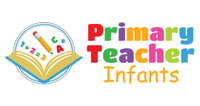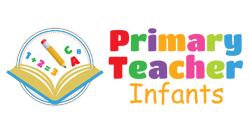NUMBER TALK

What is Number Talk?
Number Talk is a teaching method designed to boost students' mental math skills and problem-solving abilities. The teacher presents a math problem, and the class work out the solution in their heads. Then, they discuss their answers and share their strategies with the class.
Number Talk usually takes just 10-15 minutes and I use it about three times a week at the start of my math lessons.
Why use Number Talk?:
-
Strengthens Mental Math Skills: Children get to practice solving problems in their heads, which really boosts their mental math abilities without needing pen and paper.
-
Improves Problem-Solving Skills: By sharing and discussing different strategies, children learn to approach problems from various angles.
-
Choosing Different Strategies: Number Talks show that there are many ways to solve a problem. Children explore the different strategies shared by their classmates and are encouraged to develop their own unique methods.
-
Working Together: Number Talks foster a collaborative classroom environment where the class work together rather than compete. They learn to value different ideas and see how learning from each other can help them understand math better.
-
Builds Confidence: As the children get comfortable sharing their ideas and trying out different solutions, they become more confident in their math skills. This growing confidence makes them more eager to participate and enjoy learning math.
-
Develops Number Sense: Discussing various problem-solving methods helps children grasp how numbers work and how they relate to each other.
To give you a sense of how Number Talk is used in the classroom, watch the following two videos from Tools for Teachers and Greaver Kindergarden Number Talk:
Let me walk you through the four Number Talk PowerPoints available on my website. There are four different PowerPoints, and with each one, we always use and discuss the hand signals listed below for our Number Talk sessions.
The Number Talk hand signals below help children think through their answers quietly, so there’s less shouting and fewer hands waving in the air. They’re a great way for children to let you know when they’re ready to share their answers.




Here is a video of my nephew going through these signals:
1) Number Talk - The ten and twenty frame


Introducing the ten frame PowerPoint:
-
I start by introducing the ten frames and we chat about the number of squares along the top and bottom rows.
-
Next, we review our class hand signals and talk about how important they are for our Number Talk sessions.
-
I’ll show the ten frame for 5 seconds, then turn it around. During that time, students will figure out the sum in their heads and give a thumbs up or use the "thinking" gesture if they’re still working on it.
-
When I turn the frame back around, students will share how many dots they saw and how they visualised it. I’ll go around the room and write their answers on the board, and if we get different answers, we’ll explore them together.
-
After confirming the number of dots, I’ll ask students to explain how they figured it out and encourage them to use our hand signals. I’ll write down their different strategies on the board, and sometimes we’ll vote on which method we think works best and talk about why.
2) Number Talk - Dice

This PowerPoint includes slides with one dice, two dice, and three dice. Just like with the Ten Frame, you can show each slide for 5 seconds or keep it up so students can count the dots. Encourage them to use their hand signals while they work out the sum. Afterward, jot down their answers and the strategies they used on the board.
One of the most exciting parts of Number Talk is hearing the interesting and creative ways students solve their sums.
3) Number Talk - Circles

This resource has slides with one circle and then slides with two circles. You can either show each slide for five seconds so students can work out the answer in their heads or keep it on the screen so they can count and solve it at their own pace.
4) Number Talk - Dominoes (This is new)

In the Dominoes PowerPoint, you’ll see slides with different domino sums. You can click to briefly show each sum before flipping it around for students to figure out, or just leave it on the screen for them to solve directly.
I also have worksheets that go along with the PowerPoints for different activities, where students can replicate patterns from the sheets. Sometimes, I use whiteboards for solving problems. Even though Number Talk aims to reduce the use of pens and pencils, I like to mix things up with worksheets and whiteboards now and then. No matter what resources we use, I always make sure we have a Number Talk discussion to go with the activities.
All the above PowerPoints are available on primaryteacherinfants.com in the math's section.

